By: Amandine le Maire, 17th March 2022
On my return from fieldwork at Kakuma Refugee Camp, I began to translate the seven interviews that I had recorded.Converting sign language data to written English is a different process compared to transcribing spoken English into written English. This conversion from sign language to written English implicates translation between two different languages and two different modalities: from an entirely visual/gestural format with no print base to a print based written format.
I choose to translate interviews into English rather than working directly with signed language data, to be able to be able to quote the interviewee exactly. A written text-based document of a recorded sign language interview also gives more options for analysing and storing data. Translations of the interviews help me to quickly find the parts or specific terms or quotes that I need for the analysing and writing process of the PhD. However, throughout the process of analysing and writing, I always go back to signed language data to check my translations.
For my fieldwork, I began with participant observation and informal conversations and collection of data was done through fieldnotes. The interviews conducted at the end of fieldwork comprised mostly of questions that I had already asked in those informal conversations. That background knowledge gained from my fieldnotes and informal conversations helped me to create the translations.
To transcribe the seven interviews I did with deaf inhabitants of Kakuma Refugee Camp, I used a program app called Transcriptions. This app opened the video right next to the text screen and time stamps were inserted automatically which made the task of translation much easier. Simply clicking on these time stamps makes it also easier for me to return quickly and repeatedly to specific parts in the videos.
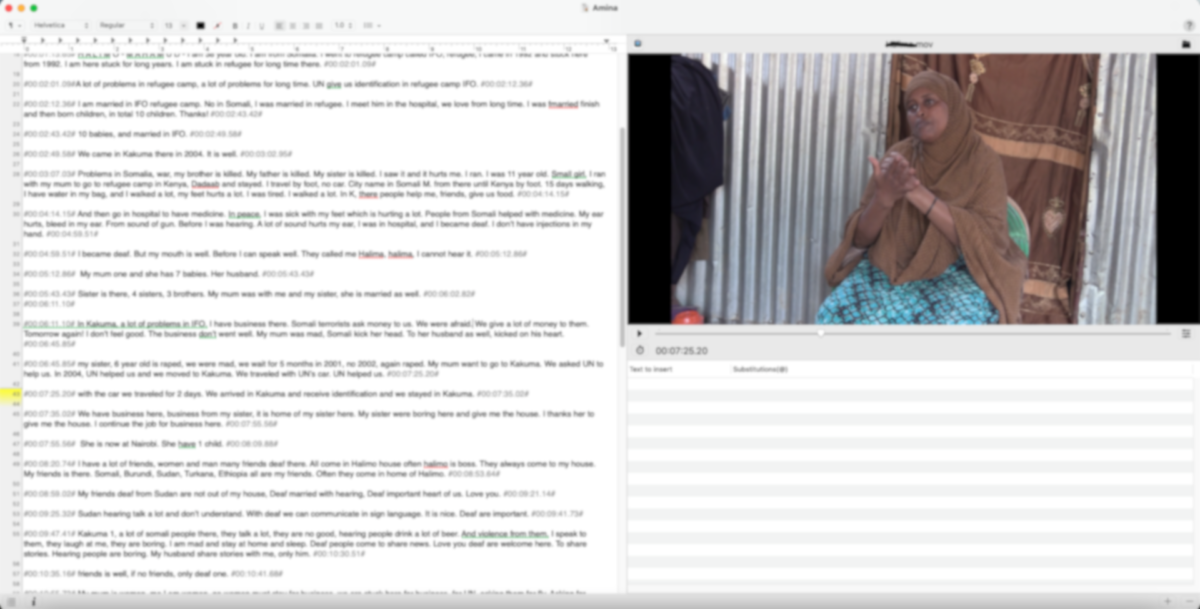
As in any sign language translation, the process was challenging due to the differences between linguistic structures, cultural usages, historical contexts and the modality shift. However, there was an added complexity in my research in the process of translating data and that was my positionality. I am a white researcher and while I am a native signer, I had only been immersed for a few months in the specific sign languages used by the people I interviewed in Kakuma. I did not have the option of asking interpreters to translate the data collected because they were not aware of the sign language used by deaf refugees. At times, it was difficult for me to pinpoint what exactly deaf refugees meant, and it was very hard to translate accurately when the deaf refugees used very little mouthing to accompany their signs.
Example one: communication versus sign language
In an interview with Moses, he explained the difference in the communication used in Kakuma compared to Kenya. When he was signing “communication”, I initially translated it as “sign language” but a closer translation would be “communication” or “signs”. Later in the interview when he explained that he learned sign language in one of Kenya’s high schools, he signs “sign” and “language”.
The two terms of “communication” and “sign language” have different meanings, the term of “sign language” is more specific to the signs used by deaf people and perhaps to named sign languages. The term of “communication” is a broader term which could mean exchange of information by speaking, writing or signing.
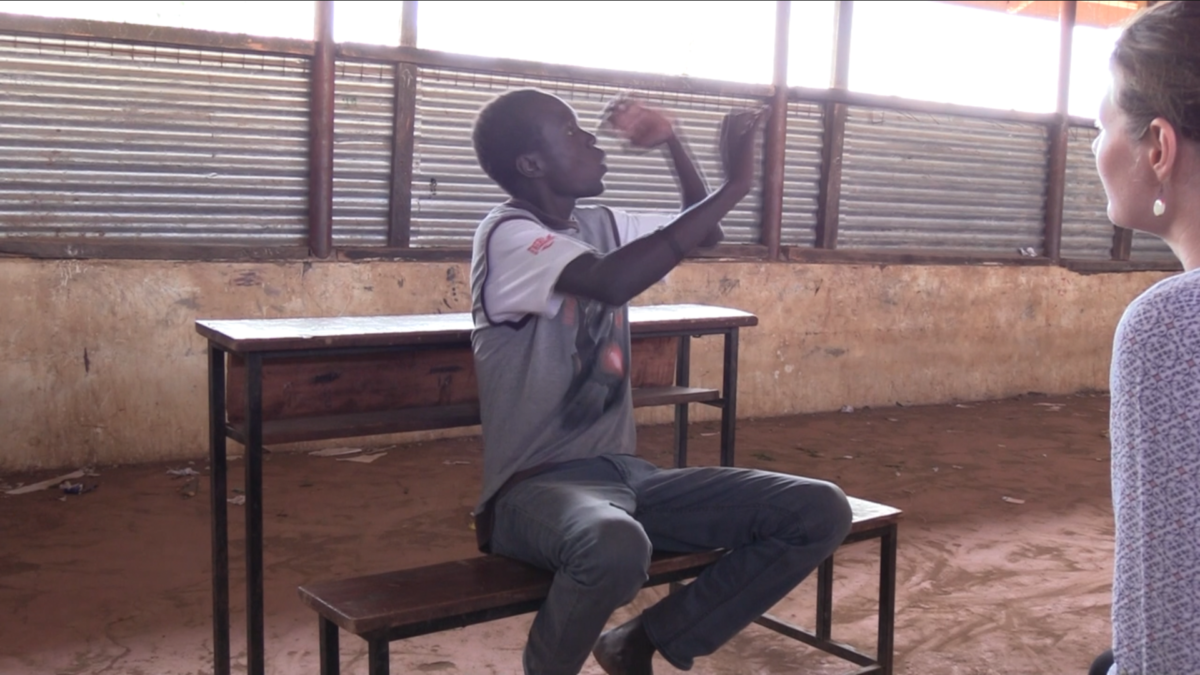


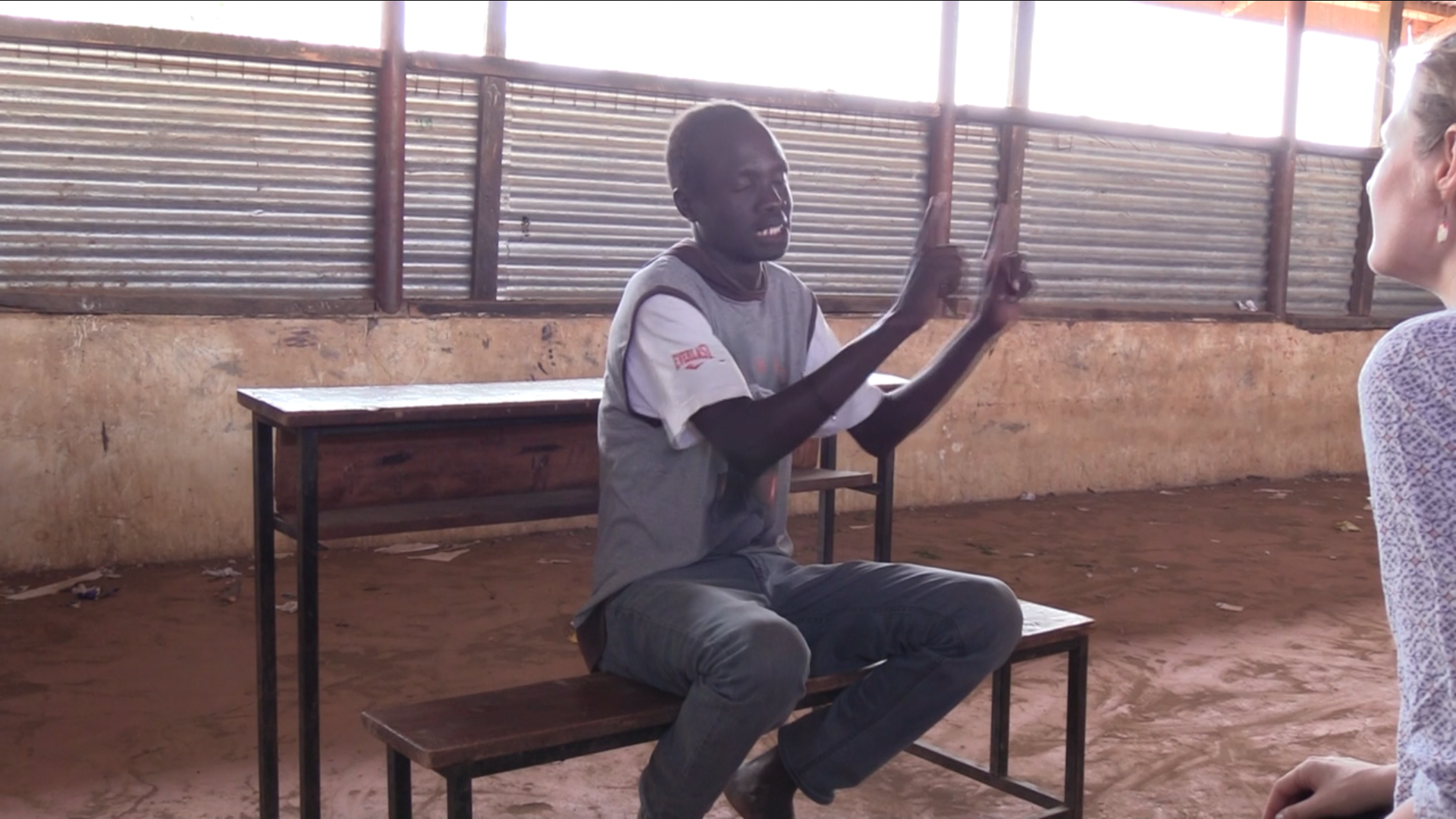
Example two: “Kenya signs are hard”
For instance, in the interview with Isse, he explained that it is his desire to study in a university in USA and he said that Kenyan signs are harder to learn compared to the USA ones. In my first transcription, I translated his signs of “Kenya” and “signs” as “Kenyan Sign Language” (KSL).
I assumed when I was watching Isse signing in that way that he meant Kenyan Sign Language as in our western tradition we give names to sign languages for instance for ASL, LSFB or BSL. In Kakuma Refugee Camp, there are other naming practices of sign languages used by deaf people such as for example the term “village signs”. The word “village” is signed with a protruding index finger with the palm positioned on the head.
Deaf refugees describe them as the deaf people who come “from the village” and they will always use the signs “village signs” when talking about them. Some deaf refugees use the same sign “signing” (as in the figure above) when talking about named sign languages such as KSL and ASL and about village signs.
My own schema of naming sign languages had an influence on my translation. After discussions with my supervisor, I decided to stay closer to the signs in my translation. For example, for Isse there are two ways in which his utterance “KENYA SIGNS” could have been translated: “Kenyan signs are hard” or “in Kenya, signing is hard”.
Those two phrases have different signification, the first one could mean that the Kenya signs are difficult to practice or to understand and the second one could mean that in Kenya, it is difficult to sign. Isse and some others deaf refugees find that Kenyan signs are hard could be probably related to his perception of KSL compared to ASL. He likes the American sign language because he found communication was much faster than for KSL. They also imply that ASL is a richer language and much more extensive than KSL. Some deaf refugees desire to be resettled in the USA thus learning ASL helps to be able to continue studies in the USA. In the final, I choose to translate Isse’s utterance “KENYA SIGNS” to “Kenyan signs are hard” because it is closer to Isse’s signs and reflect on what he thinks he means.
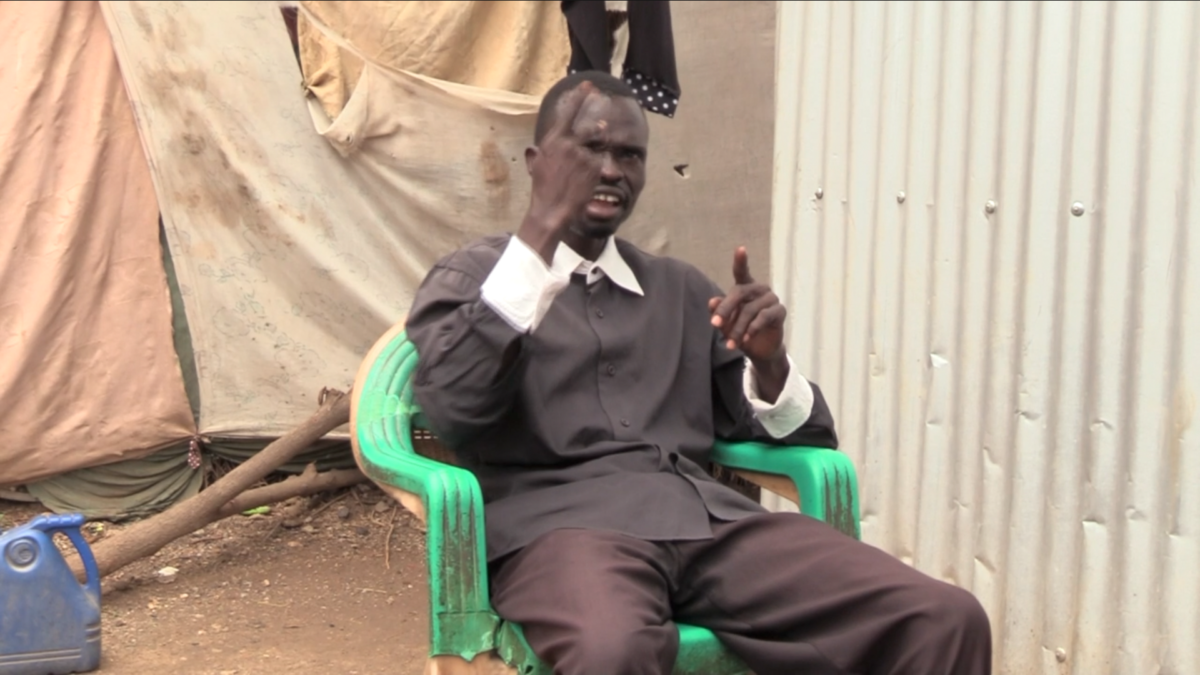

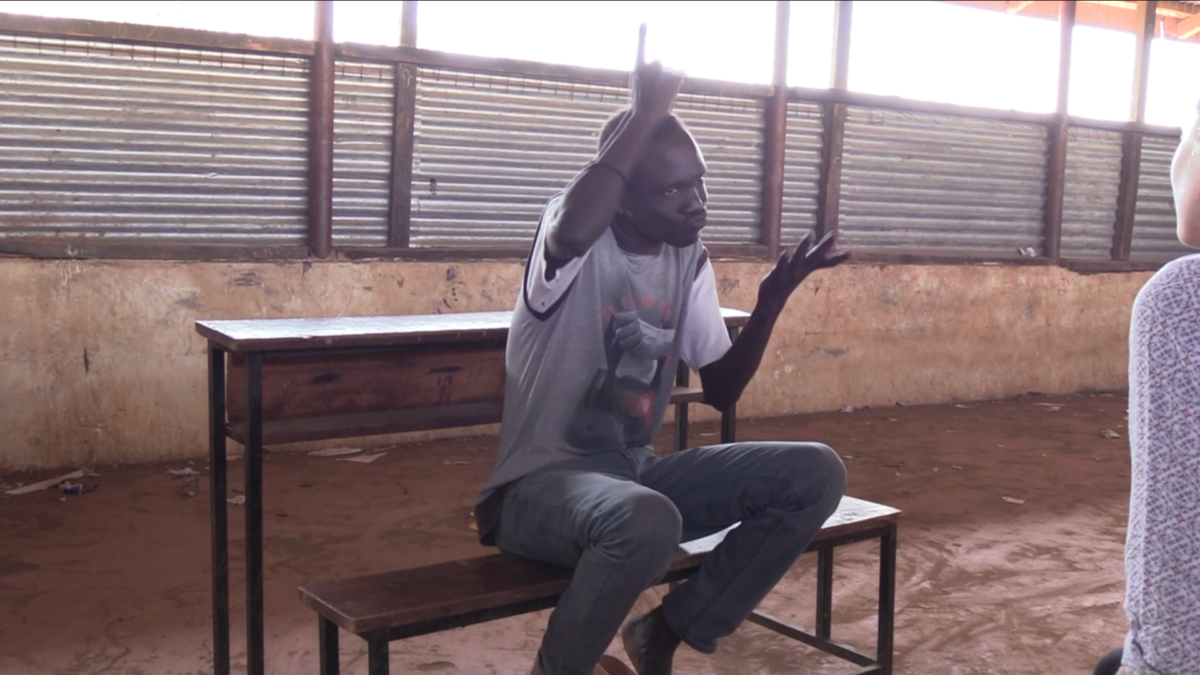

Conclusion
I realised that I needed to watch the interviews again to correct some of my translations to ensure they were as close as possible to what deaf refugees were saying with a more literal style of translation. In addition to this, for any of the excerpts that I selected to quote in my study, I closely re-examined and corrected these to ensure accuracy. The videos were always on hand if I was unsure about any of the translations, and I often revisited them (with the help of those useful timestamps) and made changes.







